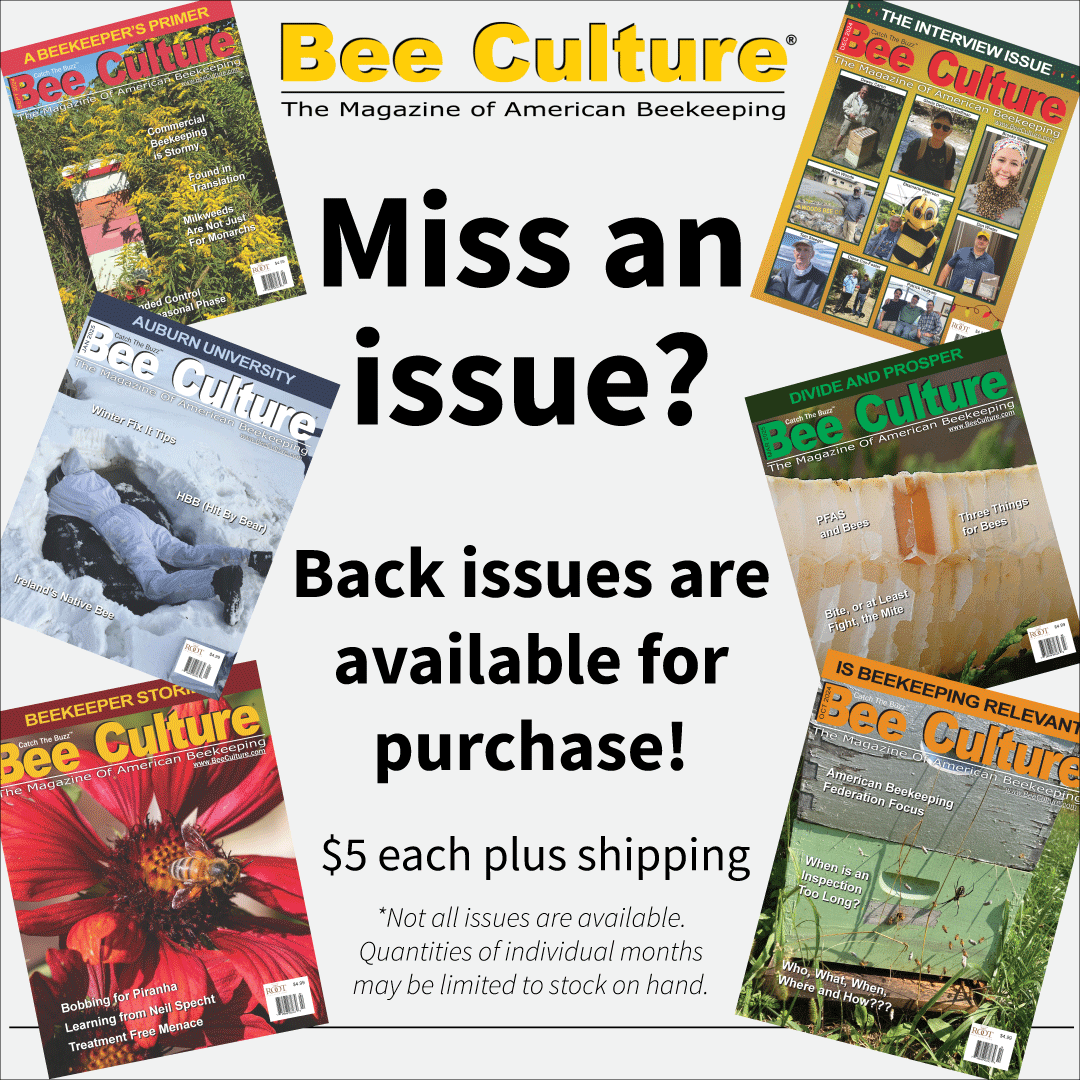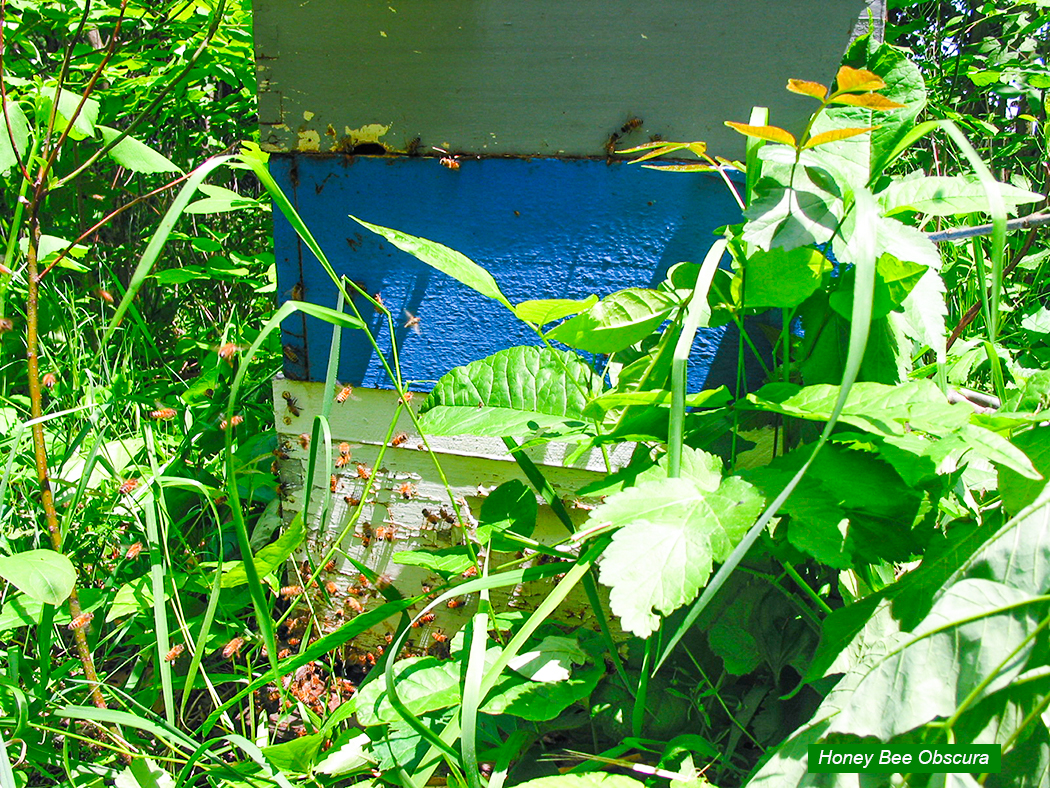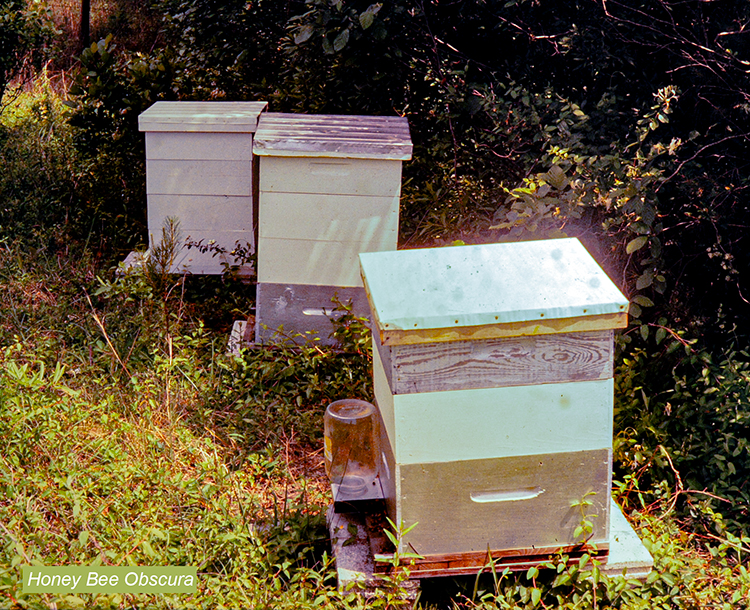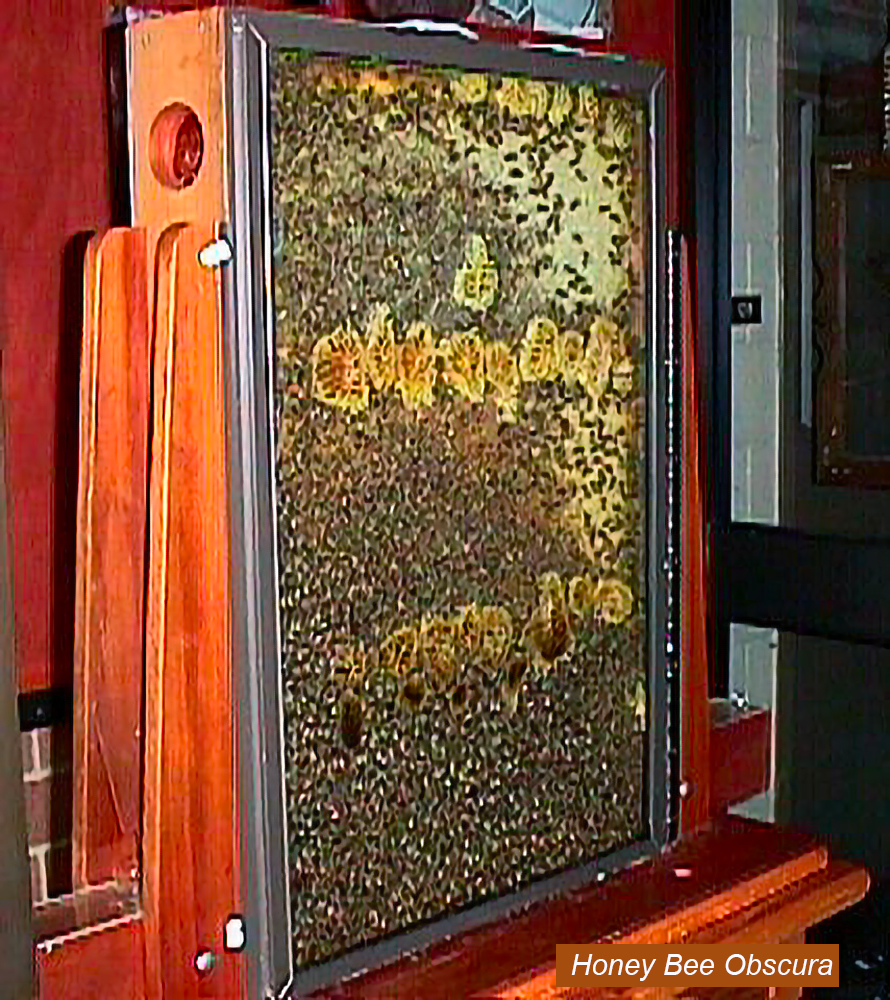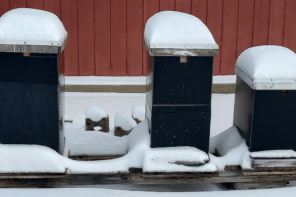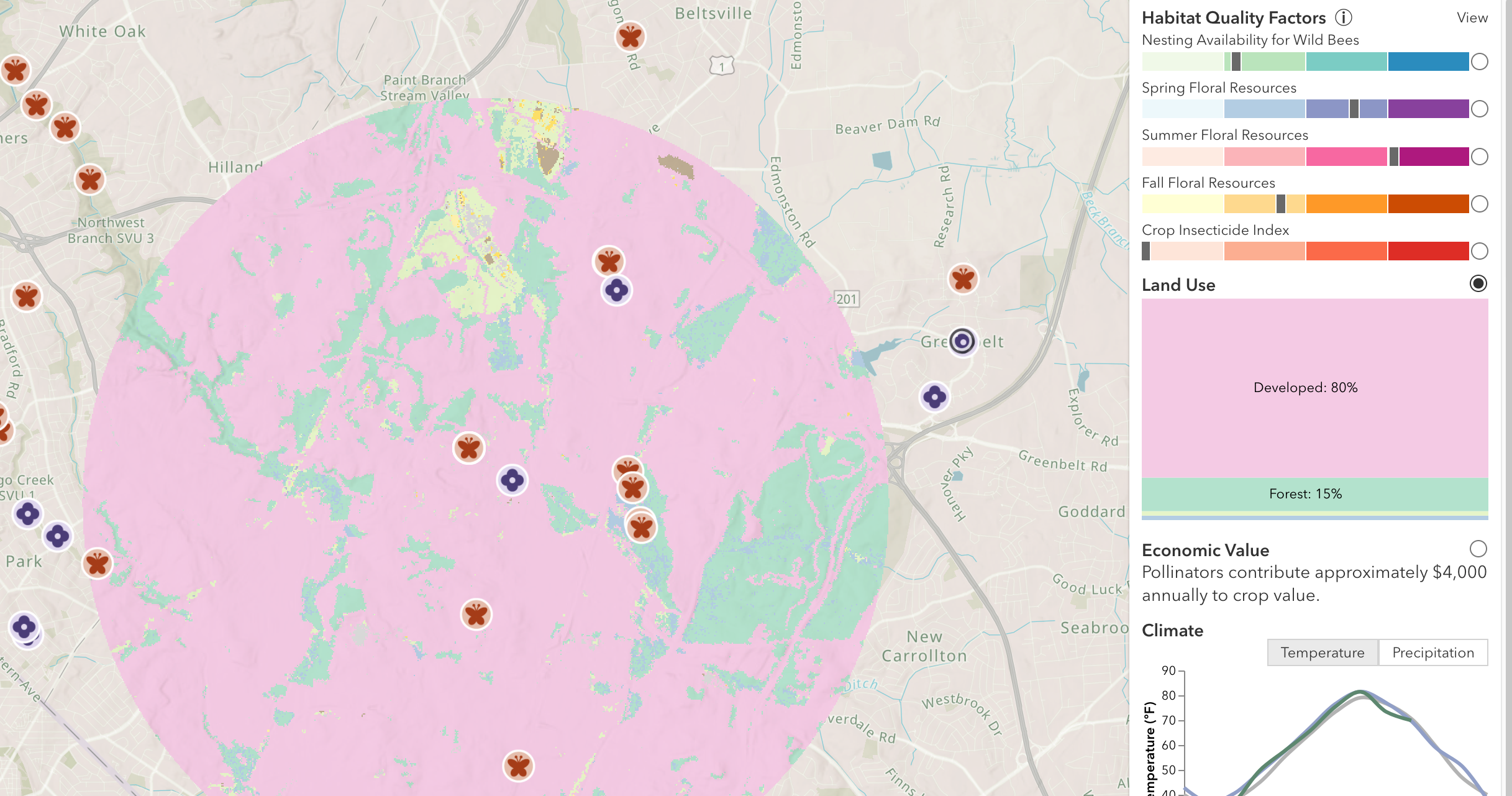Click Here if you listened. We’d love to know what you think. There is even a spot for feedback!
Read along below!
Five-Minute Beekeeping
For Those Short Times When You Need a Quick Bee Fix
By: James E. Tew
The concept
The genesis for this article occurred about twenty-five years ago. At the time, I was an energetic, busy beekeeper who was trying to get the most out of my typical day. I concocted a list of quick bee jobs that I could accomplish on the run. My, my how things change. Now, all these years later, I am exploring this “fast” beekeeping concept not to save time, but to save energy. Every day of the year, I need a bee fix of some sort. What follows is just a compilation of quick tasks that I can do without undue energy expenditure.
Okay, so you keep bees but most of the time you work them comes in short snatches. In my case, bunches of time are rare while brief snatches of time are much more common. What can I do during those tidbits of time that allows me to continue to enjoy beekeeping without getting bogged down in an all-afternoon job? A few common-sense tasks come to mind.
Tipping the colony
Lightly tip the colony from the back side. Heavy, or not? I can’t think of many times when a light colony would be a good thing so I suspect most of the time we are hoping for a heavy one.
During Winter, a light colony can be used to predict wintering success (or failure). Winter feeding is difficult to do and will probably require you to put on supers already filled with honey. Alternatively, you can hope for a mild Winter and wish for the best.
During the Spring/Summer, the weight of a colony indicates how well the Spring flow is going or has gone. Not much you can do about this but record-keep so you will have comparison information for next year.
Got a beehive relocation coming up this Summer? In preparation, tip the colony to see if supers should be taken off or if they can go along for the ride — or just to determine what lays ahead for your beehive move (and your back).
In general, tipping the colony is much like kicking the tires on a car. It gives you a scrap of information, makes you look authoritative, and is a task that just takes a minute. Check that top super. How full is it?
An aside – years ago, when speaking to a beekeeping group in the A.I. Root Conference Room, I made a comment about tipping colonies for weight estimations. An ancient beekeeper immediately took umbrage at my recommendation saying that the “fulcrum” of the hive was not a standard thing and my tipping would always be biased. He also said that tipping was a factor of personal strength. He turned to a neighboring beekeeper and asked him if he used the procedure. The beekeeper sheepishly said that, in fact, he did use the procedure. Then they went fist-to-cuffs and I was out of the loop. I always appreciated the unnamed beekeeper who took up the defense of the simple procedure and kept me out the fracas.
Electronic hive scales
I particularly like my electronic hive scale. This is ultimately easy. I can check my colony’s weight gain without even getting out of my reclined chair. The electronic inspection can be done in just a few minutes. Of course, getting the device on the colony and setting up your phone app will take more than five minutes, but the payback will be huge.
Popping the hive top
As you come in from your real job, go back to the hives and pop the lid. Depending on the season, you may or may not choose to put on a veil. If you have been keeping bees for a while, I suspect you will forego lighting the smoker (an omission for which you will occasionally be sorry). I was explaining this quick procedure to a beginning beekeeping group many years ago. I removed the top and cracked the inner cover ever so slightly to get my information tidbit. In front of 10 new beekeepers, a hostile worker bee drilled me right between my eyes — way more information than I wanted. So, checking this top super can give you a minute’s worth of information or a few moments of extreme concentration on other, more pressing matters.
During the early part of the Spring, you should tend to over super. Provide more room than they need. During the waning part of Spring or even early Summer, tend to under super so the bees will complete the honey processing procedure in supers you have already given them. Under supering doesn’t mean running out of space, though. Don’t forget that.
Trim the grass in front of the entrance
Until I have time to get the mowing equipment out, I frequently perform a quick mini cut in front of the hive. I don’t cut so much as I just grab a handful of grass and jerk it out of the ground. It grows right back. If a statement “goes without saying,” then there is probably no reason to say it, but it goes without saying that you should not grab bees in the grass that you are jerking up.
In reality, the grass in front of the hive is of little consequence so long as it is just run-of-the-mill tall grass. It is easy to pull up and gives you a quick beehive job that is easily accomplished. However, letting the hive become buried in brambles and tall weeds making them increasingly difficult to access — now that’s a different story.
Sit by the entrance for one minute and observe what the bees are doing (do this anytime bees are flying). There are few of us who can just sit by a busy hive entrance for one minute — in the Winter maybe — but when bees are actively flying, it mesmerizes us.
Watch for:
Pollen loads — when they start, what they are collecting from, quantity and when the bees change pollen collecting behavior.
Bee behaviors — such as robbing or nectar-laden bees returning from a foraging flight. Any deformed bees (indicating a mite problem)? Any wasps or animal pest problems at the hive entrance? Look for animal droppings and grass matted down at the hive entrance. (Probably skunks — and now you need to deal with that by getting your colony off the ground a couple of feet.) Drones. When do you first begin to see drones? Mark it on your bee calendar. Once drones are present, you can feel comfortable raising queens or feel safe thinking that the colony could requeen itself under desperate conditions.
Look for swarms
You will probably not see all the swarms that issue from your colonies, but you will occasionally see one or two hanging about the area during swarm season. It may take you only a minute to look for swarms, but what if you find one? It will take you considerably longer to hive it, but the-looking-for-the-swarm part should be fairly easy and only takes a minute so do it often. It’ll save you hours later.
After you keep bees in your yard for a few years, you will begin to know the places that swarms like to land. A good brief task is to check out those spots and give a perfunctory look around the yard. Seeing no swarms, you can feel good about things and then be gone.
Crack the two deeps to look for swarm cells
You are correct when you think that this will be a very busy minute. If there is a good nectar flow ongoing and if it is a very gentle colony, and if it is a perfect day, you might get away with breaking the deeps apart to check for swarm cells on bottom bars, but I suspect you should light a smoker, but hey, lighting a smoker is just a five-minute job, too. If you have five minutes, you probably have time for one more minute. So, take the extra minute and fire up the smoker.
Swarm cells commonly hang from the bottom bars of frames — but not all of them. You can probably destroy most of them, but a colony can swarm with very few cells present (sometimes they will swarm with NO swarm cells present.) The primary information that you get from this quick observation is that the colony is making plans to swarm. What measures you take from that point will take longer than five minutes.
Look for Varroa mites
In the early days of Varroa infestation, we dreamed that we could annihilate them, but they have been remarkably persistent. As beekeepers we have done a pretty good job of learning to live with Varroa in our hives, but we need to constantly keep a working estimate of our Varroa population. Many of you are trying to wean yourselves from hard-chemical hive use by using other, lesser forms of control. That’s good, but it means that you take on more responsibility for the hive’s welfare.
Sticky boards If you have sticky boards in place, an easy five-minute task is to have a look at the mite population. You will need to decide if you are going to change the board frequently or just try to estimate the drop from the last time you viewed the board. This is just an estimate, but it helps keep you informed. You probably don’t need them in for more than three days anyway — in, and out.
Screen bottom boards Many of us have incorporated screened bottom boards on our hives. Put something under the screened bottom — maybe even a sticky board and get a quick idea of population level. If you are not using something sticky, mites may blow away when you move it if you are not careful. Again, this is just a quick estimate, but do this for enough minutes and you will have a good estimate of how well your mites are doing.
Monitor nectar and pollen sources
You have already been watching the hive entrance watching for pollen and nectar collecting activities. Now take a walk to the actual plants. They may be in bloom but are bees actually working their blossoms. Too dry? Too cold or maybe too wet. Are there abundant bees on the floral source or just a few? Take the five-minute nectar/pollen stroll to determine how your plants are doing. Every year I complain about Honey Locust. It looks like the perfect plant for providing copious nectar flows, but every year this plant seems to have an excuse for not producing enough to provide a honey crop for my bees and me.
Got an external hive feeder on the hive?
This is a brief job — providing that you have replacement water or syrup ready. Either fill the feeder or take it off. Leaving it on, while empty, will cause the bees to fill the small feeder holes with propolis. Bees will take water or syrup during the warm months but will tend to ignore it during good nectar producing times of the year. The classic entrance feeder is super simple to observe and refill, but this device is not a great way to feed bees. Too often, the device – when leaking – will encourage robbing.
Read a bee magazine article
This is one of my favorite short jobs. I can stay abreast of bee comings and goings and most of the time, the article can be read in just a minute (or two, or three or five). It’s good to know what others of your ilk are thinking and doing to keep beekeeping rewarding and productive. (Plus, you can sit to read and not have a smoky odor on your clothes when the task is over).
I especially enjoy reading old bee magazine articles. For example, I have read the July 1948, issue of this magazine several times just to see what beekeepers were doing when I made my birth debut. Except for mites and more plastic equipment, beekeepers were doing pretty much then as today, but that is one of the reasons for keeping bees — the craftsmanship.
Alternatively, you can surf the web for minutes or days. There is always plenty there for whatever time you have. Over time, I have acquired my “bookmarked” sites so I can make a quick review.
Observation hives
Observation hives are perfect for quick, easy beekeeping. During the warm months, I usually have a large one set up. I can spend minutes or hours monitoring bee behavior. They are a beekeeping challenge to set up, but once it becomes functional, it’s a quick and easy way to get a dose of beekeeping without suiting up and lighting a smoker.
Really, all you are doing is estimating
When we do these quick checks, really all we are doing is estimating what bigger job may need to be done. While quick procedures, they are not without merit – plus, I enjoy the update from my colonies.
Thank you
Thank you so much for reading this piece for the energy you spend working with honey bees. I appreciate your time.
Dr. James E. Tew
Emeritus Faculty, Entomology
The Ohio State University
tewbee2@gmail.com
Host, Honey Bee
Obscura Podcast
www.honeybeeobscura.com



